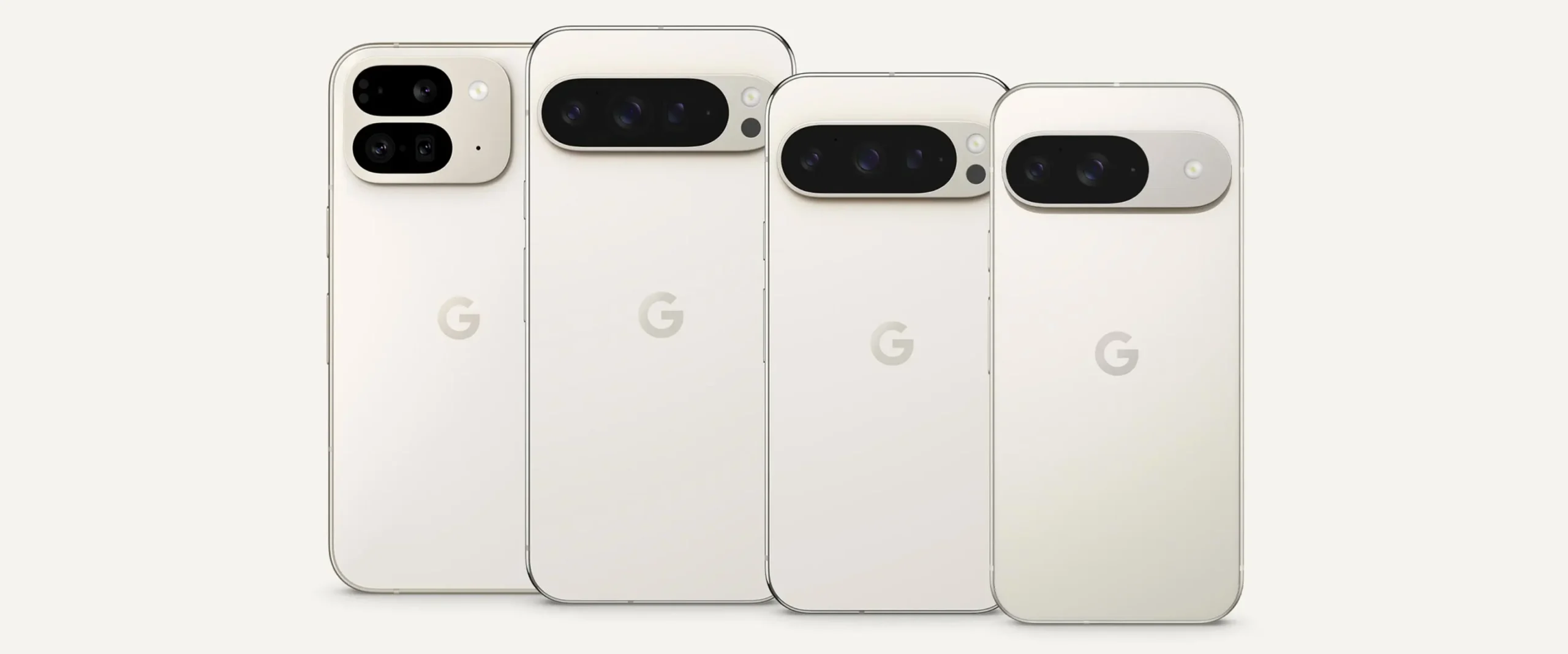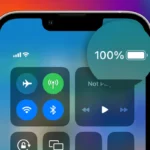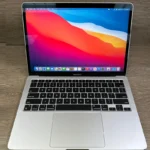Google’s June 2025 Pixel Feature Drop is more than just another software update—it’s a full-scale evolution of the Pixel experience. Rolling out in tandem with Android 16, this feature drop blends deep AI integration, expanded accessibility, and personalization tools to reshape how Pixel users interact with their devices. Let’s break down the most exciting features and what they mean for daily use.
Pixel VIPs Widget: Your Inner Circle, Front and Center
The new Pixel VIPs widget turns your home screen into a personalized hub for the people who matter most. You can pin up to eight contacts, showing their latest messages (including WhatsApp), recent calls, birthdays, shared locations, and even private notes—all stored locally for privacy. VIPs can bypass Do Not Disturb settings, making this tool perfect for staying connected with family or close collaborators. This feature subtly mimics iOS 17’s Contact Posters but keeps everything within Android’s customization ethos.
Gboard AI Stickers: Your Imagination, Now Shareable
With AI-generated stickers via Pixel Studio, Gboard now lets you create custom stickers from just a text prompt or a photo. Whether it’s a selfie or a silly concept like “grumpy cat astronaut,” the AI removes backgrounds and turns it into shareable art. This is exclusive to Pixel 9 and newer, and shows how Google is using its creative AI tools not just for productivity, but for fun, too.
Android 16 Core Enhancements: Function Meets Intelligence
Android 16 is here—and it’s full of foundational improvements:
- Live Updates: Like Apple’s Live Activities, but on the lock screen. Flight tracking, rideshare ETAs, and sports scores update in real-time.
- Material You 3.0: Android’s design language now supports more expressive theming, including dynamic color options and richer widget styling.
- Battery Health Monitoring: Similar to iPhone’s Battery Health, this new dashboard shows your battery’s maximum capacity and charging habits.
- LE Audio + Hearing Aid Support: Brings low-latency, high-quality Bluetooth audio and support for modern hearing aids on Pixel 9+ devices.
- Multitasking Previews & Desktop Features: Hints of Android’s future include floating window previews and full desktop-style windowing coming to Android tablets and possibly Pixel Fold 2.
- Scam Detection & USB Blocking: Improved security tools warn of fraud calls and block unknown USB data transfers by default.
Satellite SOS Now in Australia
Following its U.S. debut, Satellite SOS is now available to Australian Pixel 9 users. This emergency feature connects users with local emergency services when cellular and Wi-Fi signals fail—an increasingly vital tool for travelers, hikers, and rural residents. While Apple introduced this first in iPhones, Google’s version works directly with regional responders and supports basic texting as well.
Accessibility & Audio Upgrades
Accessibility gets a major spotlight in this drop:
- Live-Search Magnifier: This upgraded tool now highlights typed search terms in real-time across the screen, with optional haptic feedback.
- Expressive Captions: Automatic captions now reflect speech tones like whispering or dramatic pauses (“yessss!”), adding emotion and realism. Expanded availability includes Canada, the UK, and Australia.
- LE Audio Expansion: Pixel 9+ now officially supports low-energy audio for hearing aids, improving battery life and clarity for users with hearing impairments.
Camera Help Hub
Ever wonder what all those icons in the Pixel Camera app do? Now, a quick tap on the “?” icon brings up a mini-guide for each shooting mode. Whether you’re exploring astrophotography or adjusting HDR+ settings, this contextual learning tool is ideal for both beginners and enthusiasts.
Recorder App Gets Smarter
Pixel’s Recorder app continues to lead the pack. The June update brings:
- AI Summaries in New Languages: Transcripts and summaries are now available in French and German, with more languages coming.
- Clear Voice: Previously limited to newer Pixels, this background noise reduction feature is now available on the Pixel 8 series, delivering podcast-level clarity even in noisy environments.
Google Photos AI Editing (Rolling Out Soon)
Though not fully available yet, AI-powered one-tap editing is making its way to Google Photos for Pixel. Expect suggestions for color, lighting, background blur, Magic Eraser, Portrait Light, and even framing corrections—like having an AI photo editor built into your gallery. This marks Google’s response to Apple’s Smart Photo Edit feature in iOS 18, with a stronger focus on automation and visual balance.
Why This Feature Drop Matters
Google’s Pixel strategy has clearly shifted toward deep, on-device AI integration, focusing on real-world utility and personal context. By merging hardware with software innovations—especially with Gemini Nano running locally—this update moves Android toward a smarter, more proactive future.
With Android 16 as the backdrop, the June Feature Drop brings together security, creativity, accessibility, and AI-powered enhancements into a cohesive package. Whether you’re a tech enthusiast or casual user, there’s something here to improve your day-to-day experience.
Google Pixel Watch vs Samsung Galaxy Watch
Choosing a smartwatch for your Android phone can be tricky. The Google Pixel Watch and Samsung Galaxy Watch stand as top choices, each with their own strengths. The Pixel Watch offers better integration with Google services and twice the storage (32GB), while the Galaxy Watch boasts longer battery life and tracks over 100 exercise types compared to Pixel’s 40.
When comparing these watches, design preferences matter too. The Pixel Watch features Gorilla Glass 5, which may scratch more easily than the Galaxy Watch’s more durable glass. For fitness enthusiasts, your tracking preferences might guide your choice – the Pixel Watch uses Fitbit for health tracking, while Samsung relies on its Health platform.
The price difference also tips in Samsung’s favor. The Galaxy Watch typically offers similar specs at a lower price than the Pixel Watch. This value proposition makes the Galaxy Watch an attractive option for budget-conscious shoppers who don’t want to sacrifice features.
When comparing the Google Pixel Watch and the Samsung Galaxy Watch, it’s important to note that both run on Wear OS, offering a similar core software experience. However, they diverge significantly in design philosophy, health tracking integration, and ecosystem compatibility.
Here’s a comparison of the latest models, the Google Pixel Watch 3 and the Samsung Galaxy Watch 7:
| Feature | Google Pixel Watch 3 | Samsung Galaxy Watch 7 |
|---|---|---|
| Design | Circular, “waterdrop” domed design, minimalist | Circular, classic watch aesthetic, some models with physical rotating bezel |
| Sizes | 41mm, 45mm | 40mm, 44mm (Galaxy Watch Ultra also available at 47mm) |
| Display | Actua AMOLED LTPO, up to 2,000 nits peak brightness | Super AMOLED, up to 2,000 nits peak brightness |
| Processor | Qualcomm Snapdragon W5 | Samsung Exynos W1000 |
| RAM/Storage | 2GB RAM / 32GB storage | 2GB RAM / 32GB storage (Galaxy Watch FE has 1.5GB RAM / 16GB storage) |
| Operating System | Wear OS 5 | Wear OS 5 with One UI 6 Watch |
| Battery Life | Up to 24 hours (41mm), up to 48 hours (45mm) | Up to 40 hours (typical usage), potentially longer with power saving |
| Health Tracking | Fitbit integration (Readiness Score, Cardio Load, advanced running features), heart rate, SpO2, ECG, skin temperature | Samsung Health integration (Energy Score, advanced sleep coaching, body composition, blood pressure monitoring, irregular heart rhythm notifications), heart rate, SpO2, ECG, skin temperature |
| Workout Modes | Tracks up to 40+ workout types | Tracks over 100 workout types |
| GPS | Single-frequency GPS | Dual-frequency GPS (generally more accurate) |
| Durability | Aluminum casing, Corning Gorilla Glass 5, IP68, 5ATM | Aluminum casing (some models titanium), Sapphire Crystal glass, IP68, 5ATM, MIL-STD-810H |
| Bands | Proprietary quick-release mechanism | Standard 20mm/22mm bands (some models have specific mechanisms) |
| Price (approx.) | Starts at $349 | Starts at $299 |
| Ecosystem Integration | Deeper integration with Google, Pixel, and Nest products | Deeper integration with Samsung phones and the Samsung Health ecosystem |
Export to Sheets
Key Differences and Considerations:
- Design & Comfort: The Pixel Watch has a unique, smooth, domed design, while the Galaxy Watch offers a more traditional watch look, with some models (like the Classic) featuring a physical rotating bezel for navigation. The Pixel Watch uses a proprietary band attachment, limiting strap options, whereas most Galaxy Watches use standard band sizes.
- Health Features: Both offer comprehensive health tracking. The Pixel Watch leverages Fitbit’s established health tracking platform, offering features like Readiness Score and detailed running metrics. Samsung’s Galaxy Watches provide features like body composition analysis and FDA-cleared blood pressure monitoring (though the latter often requires a Samsung phone). Samsung also provides more workout tracking options.
- Battery Life: The Galaxy Watch generally offers better battery life than the Pixel Watch, especially on its larger models.
- Durability: Samsung often incorporates more robust materials like Sapphire Crystal glass and MIL-STD-810H certification, making some of its models more durable.
- Ecosystem: If you’re heavily invested in the Google ecosystem (Pixel phone, Nest devices), the Pixel Watch will offer more seamless integration. Similarly, Samsung users will find the Galaxy Watch more integrated with their existing Samsung devices and apps.
- Price: The Galaxy Watch series typically starts at a more affordable price point than the Pixel Watch.
Ultimately, the choice between the Google Pixel Watch and the Samsung Galaxy Watch depends on your priorities: design preference, specific health tracking needs, battery life expectations, and your current smartphone ecosystem.
Key Takeaways
- The Galaxy Watch offers better battery life and more exercise tracking options than the Pixel Watch.
- Google’s Pixel Watch features double the storage capacity and uses the Fitbit platform for health monitoring.
- Samsung provides better value with similar specs at a lower price point than the Pixel Watch.
Overview of Google Pixel Watch
The Google Pixel Watch combines elegant design with powerful technology, offering a comprehensive smartwatch experience for Android users. It features Fitbit integration for health tracking, a unique circular display, and tight integration with Google services.
Design and Aesthetics
The Google Pixel Watch sports a distinctive circular design with a domed glass surface that curves to the edges. This creates a pebble-like appearance that stands out from other smartwatches on the market.
The watch features a single crown button on the right side that serves as both a navigation tool and power button. Its minimalist design uses premium materials including Gorilla Glass 5 protection, though this may be more prone to scratches than some competitors.
Available in multiple color options for both the case and bands, the Pixel Watch offers a customizable look. The bands use a proprietary connector system that allows for quick changes between different styles.
The display is bright and vibrant with slim bezels, though not as thin as some marketing images might suggest.
Operating System
The Pixel Watch runs on Wear OS, Google’s dedicated smartwatch operating system. This provides a clean, intuitive interface with easy access to apps and notifications.
Users benefit from deep integration with Google services including Maps, Assistant, Gmail, and Calendar. Voice commands work exceptionally well thanks to Google Assistant integration.
The Pixel Watch receives regular software updates directly from Google, ensuring the latest features and security patches arrive promptly. This gives it an advantage for long-term software support.
App selection is robust through the Google Play Store, with thousands of watch-compatible applications available for download. Popular apps like Spotify, Strava, and Google Wallet all work seamlessly.
Notification handling is excellent, with quick responses and useful actions available directly from the watch face.
Hardware Specifications
The Pixel Watch houses a capable processor that handles day-to-day tasks smoothly. Animations are fluid and app loading times are generally quick.
Memory capacity is sufficient for running multiple apps without noticeable slowdown. The watch also includes 32GB of storage, which is double what some competitors offer, providing ample space for apps and music.
Battery life varies by model and usage, with the larger Pixel Watch 3 offering up to 48 hours per charge. Standard models typically require daily charging with moderate to heavy use.
Sensors include:
- Heart rate monitor
- Blood oxygen sensor
- Accelerometer
- Gyroscope
- Compass
- Altimeter
- Ambient light sensor
GPS tracking is accurate for outdoor activities, and the watch includes NFC for contactless payments.
Unique Features
The Pixel Watch’s standout feature is its Fitbit integration for fitness tracking. This provides comprehensive health metrics including detailed sleep analysis, stress monitoring, and activity tracking.
The watch offers an Emergency SOS feature that can contact emergency services when needed. Fall detection capability automatically alerts contacts if a serious fall is detected.
Google’s AI features are prominent, with smart responses to messages and contextual information throughout the day. The watch can provide weather alerts, traffic updates, and calendar notifications at just the right times.
Voice dictation is exceptionally accurate, making text input convenient. Taking calls directly on the watch works well thanks to quality speakers and microphones.
Active Edge, a feature allowing users to squeeze the watch edge for quick actions, adds unique functionality not found on other smartwatches.
Overview of Samsung Galaxy Watch
The Samsung Galaxy Watch combines sleek design with powerful features, making it a top contender in the Android smartwatch market. It offers robust health tracking capabilities while maintaining a traditional watch aesthetic that appeals to many users.
Design and Aesthetics
The Samsung Galaxy Watch features a circular display that mimics a traditional timepiece, setting it apart from many rectangular smartwatches. This classic design comes with a rotating bezel that provides an intuitive way to navigate menus and apps without covering the screen with fingerprints.
The watch is available in multiple sizes to fit different wrist sizes. Samsung offers various case materials including aluminum and stainless steel options, with the latter providing a more premium feel.
Watch bands are easily interchangeable, allowing users to customize their look for different occasions. The display uses durable glass protection that resists scratches better than some competitors.
Water resistance is another key design feature, making it suitable for swimming and other water activities.
Operating System
Samsung’s Galaxy Watch runs on Wear OS powered by Samsung, a collaborative platform developed with Google. This partnership delivers a blend of Google’s software ecosystem with Samsung’s optimization.
The watch provides access to the Google Play Store, allowing users to download a wide range of apps. Popular options like Google Maps, YouTube Music, and Google Wallet work seamlessly on the device.
Bixby, Samsung’s voice assistant, comes integrated for hands-free control. The interface is highly customizable with numerous watch faces and widgets to display the information users care about most.
Navigation is smooth thanks to Samsung’s One UI Watch interface, which is designed specifically for the circular display. Regular software updates add new features and improve performance over time.
Hardware Specifications
The Galaxy Watch comes equipped with Samsung’s Exynos processor, designed specifically for wearable devices. This chip balances performance with power efficiency.
Memory specifications include 16GB of storage, half that of the Pixel Watch but still sufficient for most users’ needs. RAM varies by model but provides enough power for smooth multitasking.
Battery life is a strong point, typically lasting 1-2 days depending on usage patterns. The watch features:
- GPS tracking
- Heart rate monitoring
- Blood oxygen measurement
- ECG capabilities (in supported regions)
- NFC for contactless payments
The display uses AMOLED technology with vibrant colors and good outdoor visibility. An always-on display option allows for checking time without raising your wrist.
Unique Features
The Galaxy Watch integrates deeply with Samsung Health, offering comprehensive fitness tracking. It monitors over 100 different exercise types, significantly more than some competitors.
Sleep tracking is particularly detailed, providing analysis of sleep stages and offering tips for better rest. The BioActive Sensor combines multiple health sensors into one efficient unit.
Body composition measurement sets the Galaxy Watch apart, allowing users to check metrics like body fat percentage and muscle mass directly from their wrist.
Samsung Pay works with both NFC and MST technology in some models, enabling payments at more terminals than competitors. Smart home control through SmartThings lets users manage compatible devices.
Emergency features include fall detection and the ability to send SOS messages with location data. The watch also offers women’s health tracking capabilities for menstrual cycle monitoring.
Display and Screen Technology
Both the Google Pixel Watch and Samsung Galaxy Watch feature cutting-edge displays that balance visibility, battery efficiency, and style. The screens on these devices serve as the primary point of interaction, making their quality a crucial factor for potential buyers.
Screen Size and Resolution
The Pixel Watch 3 comes in two sizes with different screen dimensions. The smaller 41mm model features a 1.27-inch display, while the larger 45mm version offers a 1.46-inch screen. Both provide sharp visuals with vibrant colors.
Samsung’s Galaxy Watch 7 also comes in two sizes. The 40mm model houses a 1.3-inch display, and the 44mm version features a larger 1.5-inch screen. This slight size advantage gives Samsung users a bit more screen real estate.
Resolution on both watches is excellent, with pixel densities high enough that individual pixels aren’t visible during normal use. Text appears crisp and images look detailed on both devices.
Display Type
Both watches utilize AMOLED display technology, which delivers deep blacks and vibrant colors. This technology allows parts of the screen to turn completely off when displaying black, helping conserve battery life.
The Galaxy Watch 7 features Samsung’s Super AMOLED technology, known for its exceptional color reproduction and contrast ratios. The display can reach up to 2,000 nits of brightness, making it easily visible even in direct sunlight.
The Pixel Watch 3 uses an LTPO OLED display that allows for adaptive refresh rates. This means the screen can slow down its refresh rate when showing static content, which helps extend battery life without sacrificing visual quality.
Visibility in Different Lighting Conditions
Both watches perform admirably across various lighting situations. The Pixel Watch 3 offers an always-on display mode that remains visible while conserving power. Its automatic brightness adjustment works well in most environments, though it sometimes struggles in very bright sunlight.
The Galaxy Watch 7 excels in outdoor visibility thanks to its higher maximum brightness. Users report fewer issues with glare and better readability when using the watch during outdoor activities in direct sunlight.
Both watches feature ambient light sensors that automatically adjust brightness based on surrounding conditions. This helps maintain visibility while optimizing battery life. The Galaxy Watch has a slight edge in very bright conditions, while the Pixel Watch performs better in low-light environments.
Performance and Connectivity
When choosing between the Google Pixel Watch and Samsung Galaxy Watch, performance and connectivity features significantly impact the user experience. These smartwatches differ in processing power, connection options, and battery capabilities.
Processor and Speed
The Google Pixel Watch 3 uses Qualcomm’s Snapdragon Wear 5100 processor paired with a Cortex M33 coprocessor. This combination helps the watch handle daily tasks smoothly while managing power efficiently.
Samsung’s Galaxy Watch 7 matches this processing power with comparable hardware. Both watches offer similar RAM and storage configurations, ensuring apps open quickly and run without lag.
Users notice minimal differences in everyday performance between these devices. Menu navigation, app switching, and fitness tracking work smoothly on both watches.
The processor efficiency becomes most apparent when running multiple apps or using power-hungry features like GPS tracking during workouts.
Connectivity Options
Both watches provide extensive connectivity options, though with some key differences. The Samsung Galaxy Watch has a slight edge with more advanced connectivity features than its Google competitor.
Connectivity Comparison:
- Bluetooth: Galaxy Watch supports Bluetooth 5.3 vs Pixel Watch’s Bluetooth 5.0
- Wi-Fi: Galaxy Watch offers dual-band (2.4GHz and 5GHz) while Pixel Watch only supports 2.4GHz
- Cellular: Both offer LTE options for standalone use
- NFC: Both include NFC for contactless payments
The watches also handle phone connections differently. The Pixel Watch works better with Pixel phones, while Samsung watches pair more seamlessly with Samsung phones. This becomes important when considering ecosystem integration.
Battery Life and Charging
Battery performance varies significantly between models. The larger Google Pixel Watch 3 stands out as a battery life champion with up to 48 hours per charge. This extended battery life gives it an advantage for overnight wear and sleep tracking.
Samsung’s Galaxy Watch typically offers 24-40 hours of battery life depending on usage and model. Both watches include power-saving modes to extend battery life when needed.
Charging speeds differ as well:
- Pixel Watch: 0-80% in about 45 minutes
- Galaxy Watch: 0-45% in 30 minutes with fast charging support
Battery performance depends heavily on usage patterns. Features like always-on display, GPS tracking, and LTE connectivity will drain the battery faster on both devices. Users who value longer battery life might prefer the larger Pixel Watch model over Samsung’s offerings.
Fitness and Health Tracking Capabilities
Both the Google Pixel Watch and Samsung Galaxy Watch offer extensive health monitoring features but differ significantly in their approach to fitness tracking and the ecosystems they connect with.
Available Sensors
The Pixel Watch and Galaxy Watch come equipped with similar core sensors. Both watches include heart rate monitors, accelerometers, gyroscopes, and altimeters to track your daily activities.
The Galaxy Watch pulls ahead with its BioActive Sensor that combines multiple health monitoring functions into one chip. This integrated approach allows for more efficient battery usage while tracking various health metrics.
Pixel Watch uses a continuous heart rate sensor that samples more frequently than many competitors. This helps provide more accurate heart rate data during workouts and throughout the day.
Both watches include blood oxygen sensors, though their availability may vary by region due to different regulatory approvals.
Health Features
The Pixel Watch leverages Fitbit’s health tracking platform, giving users access to comprehensive sleep analysis, stress management tools, and detailed health insights.
Samsung watches use Samsung Health, which offers similar features but with some unique additions. Galaxy Watch users can access:
- ECG (electrocardiogram) functionality
- Blood pressure monitoring (in supported regions)
- Body composition analysis
- More comprehensive sleep tracking with snore detection
The Pixel Watch offers a Daily Readiness Score through its Fitbit integration, helping users understand when to push their workouts or focus on recovery.
For Samsung phone owners, the Galaxy Watch provides better health monitoring coordination with their phones, enabling seamless data sharing and integrated wellness tracking.
Fitness Tracking Accuracy
When it comes to workout tracking, the Samsung Galaxy Watch tracks over 100 exercise types, significantly more than the Pixel Watch’s 40 supported activities.
The Pixel Watch benefits from Fitbit’s well-established fitness algorithms. These provide reliable calorie estimates and workout intensity measurements based on years of fitness tracking expertise.
Galaxy Watch offers more detailed metrics for specific activities like swimming and running, with advanced features for serious athletes. It also provides more customizable workout screens during exercise.
Both watches offer automatic workout detection, though response times and accuracy may vary depending on the activity type. Walking, running, and cycling are typically detected most reliably.
GPS accuracy is comparable between the two, though the Galaxy Watch may have slightly better battery life during GPS-tracked activities.
Software and Ecosystem
Both smartwatches run on Wear OS but offer different experiences through their unique interfaces and health platforms. The choice between Pixel Watch and Galaxy Watch often comes down to their software features and how well they work with your other devices.
App Compatibility
The Pixel Watch and Galaxy Watch both run on Google’s Wear OS platform, giving users access to a wide range of apps through the Google Play Store. The Pixel Watch offers 32GB of storage, which provides plenty of space for apps and music.
Samsung’s Galaxy Watch uses One UI Watch, a customized layer on top of Wear OS. This gives Samsung users a familiar experience that matches their phones.
For fitness tracking, the watches use different systems. The Pixel Watch relies on Fitbit for health tracking, while Galaxy Watch uses Samsung Health. This difference matters if you already use one of these platforms.
Third-party App Support
Both watches support popular third-party apps like Spotify, Strava, and Google Maps. The Google Play Store offers hundreds of apps for both devices, though some apps may perform better on one watch than the other.
The Pixel Watch tends to have better integration with Google services like Assistant, Maps, and Gmail. This makes sense since Google designs both the hardware and software.
Samsung’s watch works well with most apps but shines with Samsung-specific features. Some third-party developers optimize their apps first for Galaxy Watches due to Samsung’s market share in the Android smartwatch space.
Neither watch has app limitations that would be a dealbreaker for most users.
Integration With Smartphones
The Pixel Watch works with any Android phone but provides the best experience when paired with a Pixel phone. Features like Fast Pair and automatic setup make the process seamless for Pixel users.
Galaxy Watches can also work with any Android phone but offer extra features when paired with Samsung phones. These include Samsung Messages integration, Samsung Pay, and the ability to control SmartThings devices.
One notable difference is that the Galaxy Watch has been reported as more durable with better scratch resistance than the Pixel Watch’s Gorilla Glass 5 protection.
Battery management between phone and watch also varies. The Pixel Watch 3 offers impressive battery life of up to 48 hours, making it less dependent on frequent charging from your phone.
Price and Value Proposition
When choosing between the Google Pixel Watch and Samsung Galaxy Watch, price plays a major role in the decision. Both watches offer different value propositions based on initial cost and long-term ownership expenses.
Retail Price Comparison
The Samsung Galaxy Watch 7 is more affordable, starting at $299.99 for the Bluetooth-only model. The larger Galaxy Watch 7 costs $329 for the Bluetooth version.
The Google Pixel Watch 3 has a higher entry price at $349.99 for the smallest size with Bluetooth only. The 45mm Pixel Watch 3 jumps to $399 for the Bluetooth model.
For those wanting cellular connectivity, both watches charge a premium. The Galaxy Watch 7 with LTE costs $379, while the Pixel Watch adds $50 to its base price for this feature.
Cost Over Time
Beyond the initial purchase price, several factors affect the total cost of ownership. Software support is a key consideration – both Google and Samsung offer system updates, but Samsung has historically provided longer support periods for their watches.
Battery replacement becomes necessary after 1-2 years of heavy use. The Pixel Watch has worse battery life compared to Samsung models, potentially leading to more frequent charging and faster battery degradation.
Accessory costs also add up. Both watches use proprietary bands and charging solutions. Samsung offers more third-party band options at lower prices, while Pixel Watch bands tend to be more expensive.
Monthly carrier fees for LTE models are identical regardless of which watch you choose, typically around $10 per month when added to an existing phone plan.
Customer and Expert Reviews
Both watches have gathered feedback from regular users and tech experts alike. Reviews highlight key differences in user experience, durability, and support quality that might influence your buying decision.
General Reception
The Pixel Watch and Galaxy Watch have received mixed reviews from customers and experts. The Galaxy Watch is often praised for offering better value with similar specs at a lower price point than the Pixel Watch. According to Reddit users, the Pixel Watch has a worse battery and higher price tag despite similar specifications.
Tech experts at PCMag note design differences that affect user experience. The Pixel Watch features a more curved edge design, while the Galaxy Watch has a flatter, starker appearance. These design choices impact not just looks but how the watches feel during daily wear.
The Pixel Watch 3 has gained positive attention for its impressive battery life. The larger model can last up to 48 hours on a single charge, making it a strong option for users who dislike frequent charging.
Durability and Longevity
Durability is a key concern for smartwatch buyers. The Galaxy Watch appears to have an edge in this area. It uses stronger glass protection compared to the Pixel Watch, which only has Gorilla Glass 5. Users report that the Pixel Watch scratches more easily than both the Galaxy Watch and Apple Watch.
Physical dimensions also play a role in durability perceptions. The Pixel Watch 3 is thicker at 0.48 inches compared to the Galaxy Watch 7’s 0.38 inches. This extra thickness might provide more protection but could make the watch feel bulkier on smaller wrists.
Many reviewers note that both watches hold up well for daily use, but active users who frequently expose their watches to rough conditions might prefer the Galaxy Watch’s more robust construction.
Brand Reliability and Support
Samsung has a longer history in the smartwatch market, which shows in their customer support and reliability ratings. Many users report smoother software updates and fewer bugs with Galaxy Watches compared to Pixel Watches.
Google has been improving its support for Pixel devices. Their regular software updates add new features and fix issues. However, being newer to the hardware game means they’re still catching up to Samsung’s established support system.
Warranty service experiences differ between brands. Samsung’s larger service network gives users more options for in-person support. Google relies more heavily on mail-in service, which some users find less convenient when immediate help is needed.
Battery reliability is another support consideration. While the newer Pixel Watch 3 shows improved battery performance, Samsung’s track record for consistent battery performance across device generations gives some buyers more confidence.
Frequently Asked Questions
Smartwatch buyers often need to compare key features before making their purchase. The Pixel Watch and Galaxy Watch differ in several important ways that impact daily use.
What are the differences in specifications between the Pixel Watch and the Samsung Galaxy Watch?
The Pixel Watch and Galaxy Watch have similar core specs but notable differences. The Galaxy Watch generally offers more RAM and processing power compared to the Pixel Watch.
Samsung’s watch includes more durable materials. The Galaxy Watch uses stronger glass protection that makes it less prone to scratches than the Pixel Watch, which only uses Gorilla Glass 5.
Screen shapes also differ between the models. The Pixel Watch features a round display with a dome-like design, while the Galaxy Watch has a flatter round screen with thinner bezels.
How does the battery life of the Pixel Watch compare to the Samsung Galaxy Watch?
Battery life is a major difference between these watches. The Galaxy Watch typically lasts longer between charges than the standard Pixel Watch.
The Galaxy Watch offers better battery performance while maintaining similar specs to the Pixel Watch. This makes it more practical for extended use.
However, the newer Pixel Watch 3 has made improvements. The larger model of the Pixel Watch 3 now boasts up to 48 hours of battery life per charge, closing the gap with Samsung’s offerings.
Which watch offers a better user experience, the Pixel Watch or the Samsung Galaxy Watch?
User experience differs based on your phone preference. The Pixel Watch offers tighter integration with Google services and a cleaner interface.
Samsung’s Galaxy Watch works best with Samsung phones. It includes more customization options through the One UI interface but may feel less intuitive to non-Samsung users.
Both watches run Wear OS, but Samsung adds its own layer on top. This means slightly different app layouts, watch faces, and menu systems between the two devices.
Are there any significant design differences between the Pixel Watch and the Samsung Galaxy Watch?
The design approaches differ clearly between these watches. The Pixel Watch has a minimalist, dome-shaped design with a single crown and button.
Samsung’s Galaxy Watch features a more traditional watch design with a rotating bezel on some models. This physical control makes scrolling through menus easier than on the Pixel Watch.
Size options also vary. Samsung typically offers more size choices, while Google has been more limited until the Pixel Watch 3, which now comes in two sizes.
How do the health and fitness features of the Pixel Watch and the Samsung Galaxy Watch compare?
Both watches offer comprehensive health tracking. The Pixel Watch uses Fitbit’s health platform, which many find more user-friendly and accurate for sleep tracking.
Samsung’s health features are deeply integrated with Samsung Health. The Galaxy Watch includes some unique sensors like bioelectrical impedance for body composition measurements not found on the Pixel Watch.
Heart rate monitoring, step counting, and workout detection work well on both devices. However, the Galaxy Watch typically offers more specialized workout modes and outdoor activity tracking.
What are the pricing differences between the Pixel Watch and the Samsung Galaxy Watch?
The Pixel Watch is generally priced higher than comparable Galaxy Watch models. The Google Pixel Watch costs $349.99, with an extra $50 for cellular connectivity.
Samsung’s Galaxy Watch is often more affordable for similar features. This makes the Galaxy Watch a better value proposition for many buyers.
Both companies offer sales throughout the year, but Samsung tends to provide more frequent discounts and bundle deals when purchasing with their smartphones.







